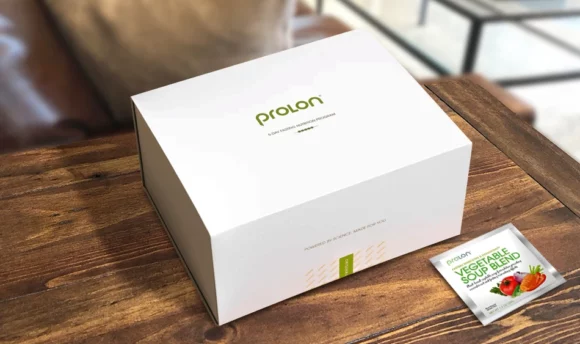12:12 vs. 16:8 Intermittent Fasting: Key Differences
Fasting is one of the most effective techniques to reduce weight, but which one should you choose: 12:12 or 16:8? Both have pros and cons. Keep reading for more information on these two fasting methods.

Intermittent fasting is a popular dietary trend for weight loss, health improvement, and longevity. However, not all intermittent fasting regimens are made equal; there are a few distinct protocols that involve eating at different intervals to achieve other outcomes.
Today, we’ll look at two of the most popular intermittent fasting schedules: 12:12 and 16:8. We’ll outline their differences and health benefits so you can decide which plan best matches your lifestyle and goals. But first, let’s start with the basics.
What Is Intermittent Fasting?
Intermittent fasting is a popular dieting technique that has gained traction over recent years as an effective way to lose weight and improve general health. Simply put, it is an eating pattern involving cycling between eating and intentional fasting.
As you gradually shift into a fasted state, your body adjusts to preserve energy conservation while continuing normal metabolic functions.
When within the fasted state, your body transitions from relying primarily on glucose for fuel to more efficiently utilizing stored fat as an energy source.
At the same time, your body goes through a process known as autophagy, which is linked to many positive benefits, such as decreased inflammation and improved immunity, by removing and recycling old cell components.
Additionally, fasting increases certain hormones that help you reduce fat storage, boost metabolism, and gain muscle tone.
All in all, if done correctly with proper dieting and hydration, intermittent fasting can have tremendous impacts on weight management and your general well-being.
While traditional dieting focuses on reducing food quantity and restricting calorie intake, intermittent fasting places emphasis on when you eat your meals instead.
There are various fasting approaches to choose from, such as 18:6, 16:8, 12:12, 5:2, and 24-hour fast, among others. Today, we’ll focus on two of the most well-known methods: 12:12 and 16:8.
Key Differences of 12:12 vs. 16:8 Intermittent Fasting
Overall, intermittent fasting is a good weight management choice for everyone. However, with the various fasting programs available, it is important to choose which plan is ideal for you, especially if you are new to intermittent fasting.
A lot of factors come into play when choosing the best option, including your circadian rhythm, activity levels, and your daily routine.
Let’s take a look at several important distinctions between the 12-hour and 16-hour fasts.
#1 Eating and fasting window
The main difference between both fasting approaches is their eating and fasting window. As the name already suggests, 12:12 fasting involves a 12-hour fast followed by a 12-hour eating window. Likewise, 16:8 fasting involves fasting for 16 hours and then having an 8-hour eating window.
One advantage of the 12:12 fasting method is that it’s quite natural for everyone, and you don’t need a lot of effort to follow it as you mostly sleep through your fasting window. However, if you want to try something more challenging, increasing your fasting to 16 hours might be a reasonable choice – but it will require some adjustment in the beginning.
#2 Autophagy
16:8 fasting has been found to be an effective way to activate autophagy. Autophagy is the body’s process of breaking down damaged, unnecessary, or unwanted components within cells to prevent disease and promote overall health.
16:8 fasting differs from 12:12 fasting in that it more successfully stimulates autophagy, allowing people to maintain their usual eating patterns while still allowing their bodies to cleanse and promote health and wellness.
#3 Weight and fat loss
Numerous studies show that the 16-hour intermittent fast causes fat stores in fat cells to be reduced faster than the 12:12 approach.
The benefit of this approach is that your body utilizes fat stores over a longer 16-hour period, having only consumed calories for 8 hours. During these 16 hours, fat cells will start breaking down as fat is converted into energy, which releases ketones, leading to weight loss.
Coincidentally, your body’s ability to maintain ketosis is the basis of the keto diet. With 12:12 intermittent fasting, the fat loss still occurs; however, since calories are spread out over a longer period, fat cells will break down at a slower rate than with the 16:8 pattern.
4 Benefits of Prolonged Fasting
#1 Lowers the risk of diabetes
According to research, intermittent fasting helps lower blood sugar levels and insulin resistance, all of which are precursors of diabetes.
In fact, studies reveal that in people with prediabetes, intermittent fasting decreases glucose levels by as much as 6% and fasting insulin levels by 20–30%. As such, prolonged fasting could potentially reduce one’s risk of developing diabetes or high blood glucose levels by decreasing the release of certain hormones and enzymes, which could affect overall glucose metabolism.
#2 Anti-inflammatory effects
The one thing to look at when studying aging is the effects of oxidative stress. Oxidative stress occurs when free radicals in our bodies damage our cells and DNA, which can result in chronic disease and significantly accelerate aging.
While oxidative stress itself is an inevitable part of life, scientists have discovered several ways to counteract it.
There are claims that intermittent fasting drives down oxidative stress by reducing oxidative damage and improving cellular resilience, making it an attractive option for those looking to reduce inflammation – whether naturally or due to chronic health issues.
#3 Increases fat burning
Intermittent fasting is a simple and safe method used to increase fat burning and reduce weight. The technique works by pushing the body into ketosis, a metabolic state in which the body uses fat instead of carbohydrates as its primary energy source.
In addition to helping people lose weight and reduce BMI, studies reveal that prolonged fasting also reduces inflammation, which, as mentioned previously, helps protect against certain diseases like cancer and diabetes.
#4 Boosts cardiovascular health
Health-related problems are the leading cause of death globally.
According to studies, intermittent fasting helps lower blood pressure and bad cholesterol levels, which are key instigators of heart issues such as strokes, heart attacks, and other cardiovascular diseases.
How to Get Started With 12:12 and 16:8 Fasting?
Intermittent fasting does not require complex planning; the only thing you need to do is to decide your fasting window length and how to incorporate it into your daily routine.
The 12:12 fasting is a straightforward approach to fasting, as it simply involves eating during one half of the day and fasting during the other. This typically means setting up your routine to fast while you sleep.
Some common examples of the 12:12 fasting period include:
- 6 AM – 6 PM
- 7 AM – 7 PM
- 8 AM – 8 PM
- 9 AM – 9 PM
With the 16:8 intermittent fasting schedule, your best option is to structure your 16-hour fasting period, which lines up with your sleep and meal hours.
Many experts suggest eating your last meal of the day early in the evening as the human metabolism tends to slow down during this period. However, this suggestion is not absolute, as it does not work for everyone.
Regarding the 8-hour eating period, the vast majority of people prefer to schedule it between noon and 8 PM, maintaining the typical lunch and dinner routines. That way, breakfast is the only meal they skip for each fasting day.
This comes in particularly handy for people with significantly busy lives. However, there are other fairly common fasting routines, including:
- 9 AM to 5 PM
- 10 AM to 6 PM
- 11 AM to 7 PM
- 12 PM to 8 PM
- 1 PM to 9 PM
Regardless of your preferred meal time, we recommend abstaining from full meals or snacks 2 to 3 hours before bedtime.
FAQs
The 16:8 intermittent fasting plan trumps the 12:12 intermittent fasting plan when it comes to cutting weight.
Yes, a 12-hour fast is just enough to see the benefits of intermittent fasting, such as weight and fat loss, reduced inflammation, and improved digestive health.
As of today, the 12-hour fast is the minimum fasting period.
A Word From Our RD
Intermittent fasting is a rad way to burn calories and fat and lose weight. There are different approaches to take, and they all offer the same pool of health benefits.
Still, they do come with a few side effects, with the most common being hunger, which, if left unchecked, can lead to binge eating.
As such, before trying out any of these fasting approaches, it is important to check in with a qualified health professional. That is because they can ascertain which method is best for you, what your fasting diet should look like, and when to schedule your fasting.
Conclusion
There are some key differences between the 12:12 and 16:8 intermittent fasting schedules. The 12-hour fast is better for those who are new to fasting or want to ease into it, while the 16:8 method is a more advanced form of fasting that provides greater weight loss results.
However, both methods offer health benefits such as improved blood sugar levels, reduced inflammation, and increased gut health. Try out both ways and see which one works best for you!

















































 Select your language:
Select your language: 








